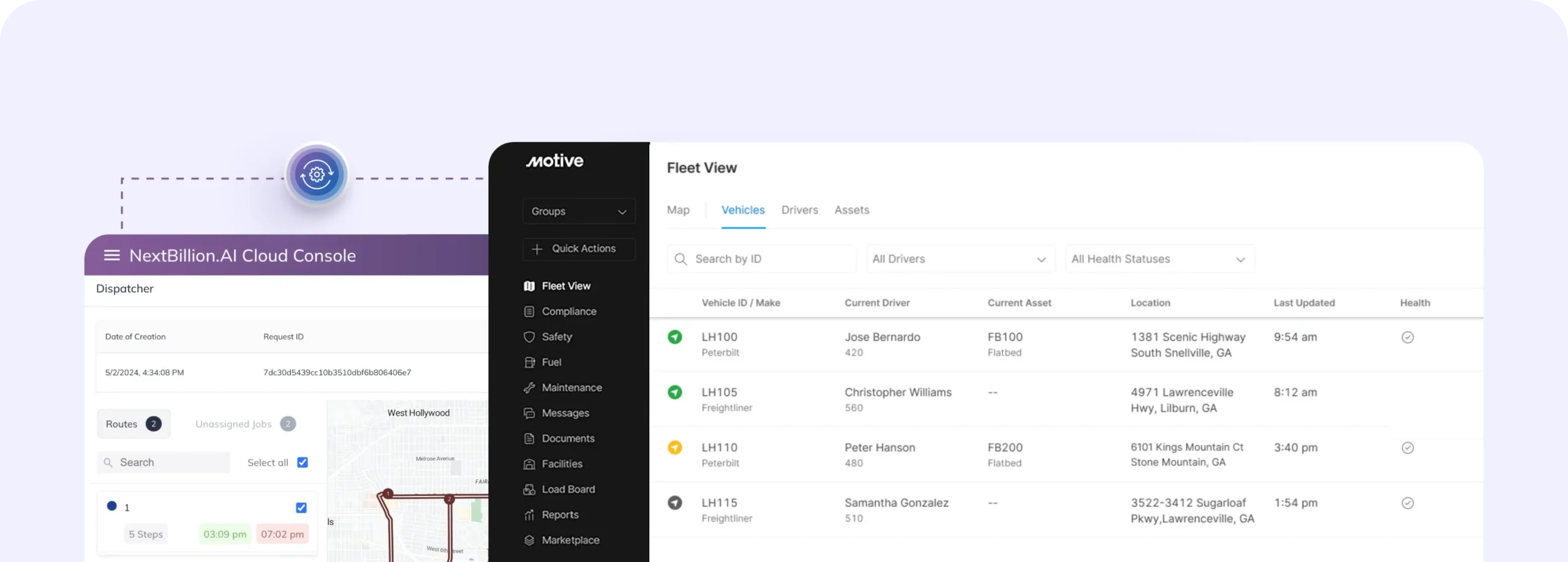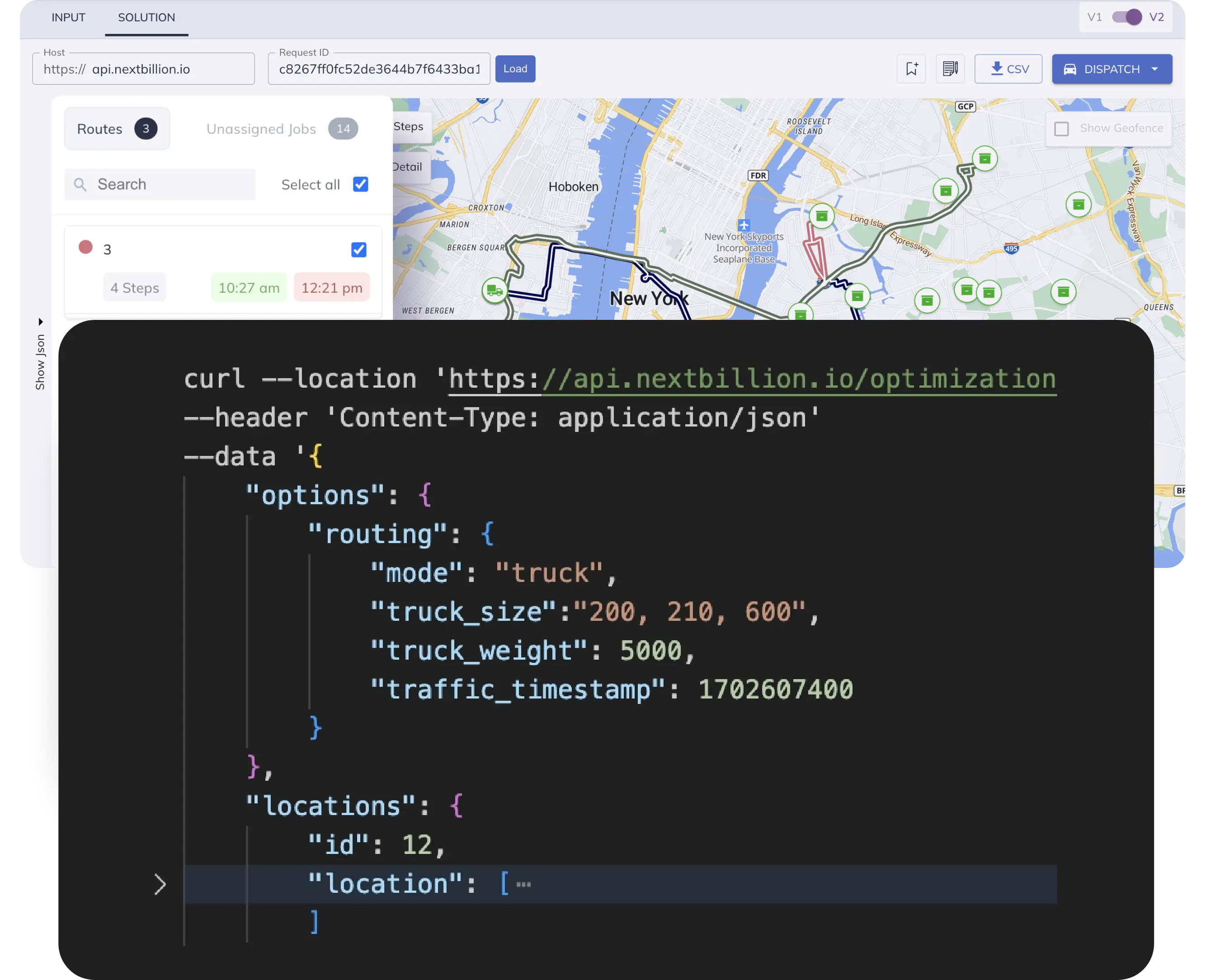Table of Contents
In the second quarter of 2024, NextBillion.ai made significant advancements in its Route Optimization API, including features like order incompatibility, depot management and custom distance matrices.
Our Driver app is now available on the Apple App Store. NextBillion.ai is listed on the Motive marketplace. We introduced new features to our Route Planner application as well.
We launched the JetPack Compose extension for Maps SDK and Navigation SDK and released a Geocode application in NextBillion.ai Cloud Console. We also introduced new solutions for on-demand delivery and field services industries.
Explore these exciting updates in detail below.
Enhance Route Efficiency and Safety With New Route Optimization API Features
1. Advanced depot management for precise routing
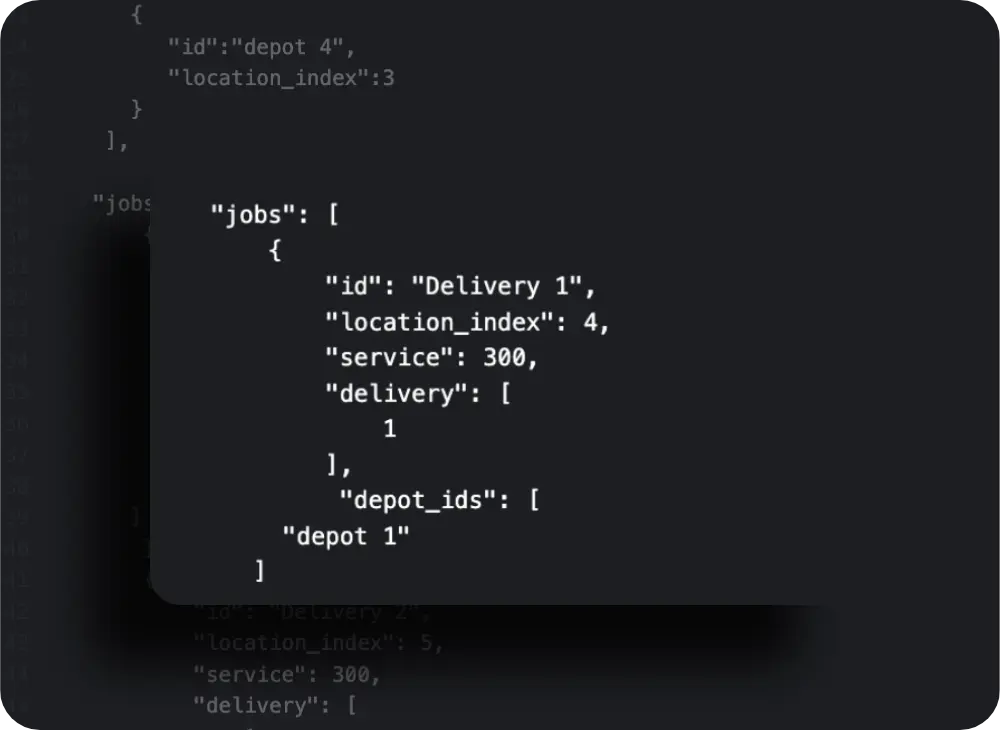
Our Route Optimization API now includes enhanced depot features. You can link specific jobs to depots, ensuring that only vehicles from designated depots can fulfill those jobs. For delivery jobs, vehicles must start from the specified depot, and for pickup jobs, vehicles must end at the specified depot. Additionally, vehicles can now start and end at multiple depots, providing greater flexibility in route planning.
See a detailed example illustrating the depot feature.
2. Ensure safe cargo with order incompatibility

The API’s ‘incompatible_load_types’ feature helps logistics providers handle cargo safely by preventing the mixing of incompatible load types. By configuring load types and specifying incompatible ones for each shipment, the optimization engine ensures vehicles carrying certain types of cargo are not assigned tasks involving incompatible loads.
See a detailed example illustrating the order incompatibility feature.
3. Set maximum ride time limits for efficient routing
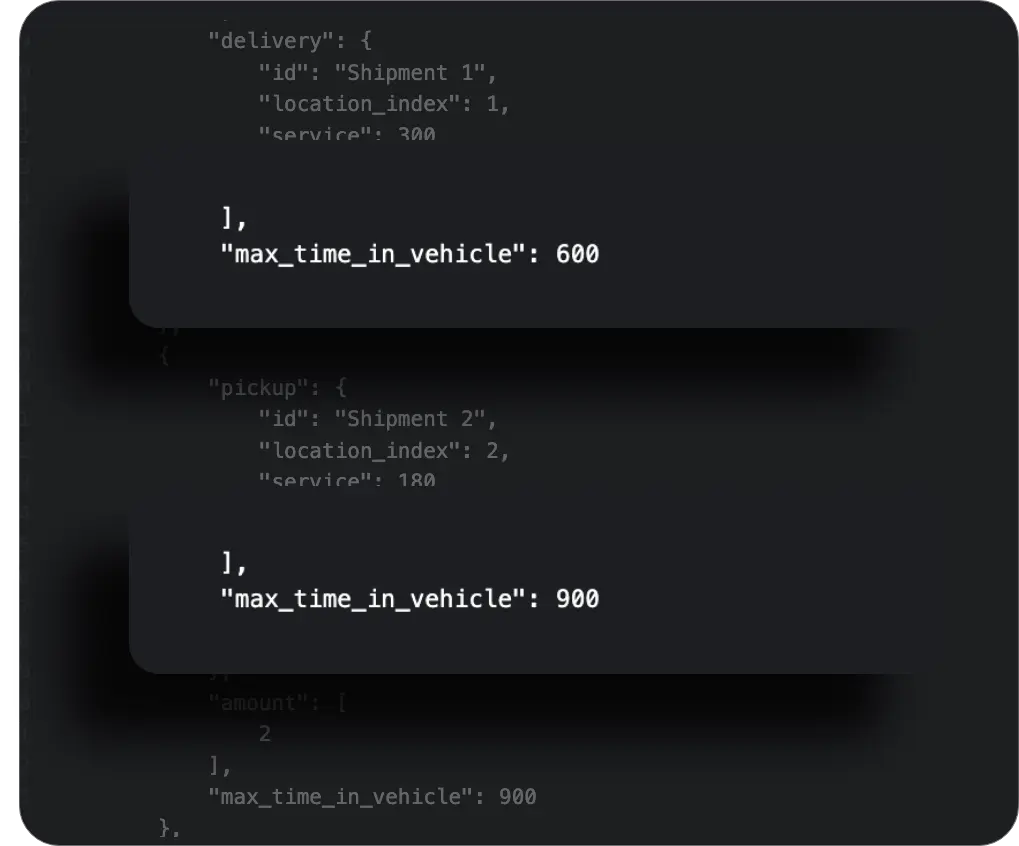
Our Route Optimization API now includes the ‘max_time_in_vehicle’ feature. This update allows you to set a maximum ride time for passengers or shipments, ensuring efficiency in industries like car-pooling and emergency services. The optimization engine uses this limit as a hard filter when planning routes.
See a detailed example illustrating the maximum ride time feature.
4. Custom distance and duration matrix for tailored routing
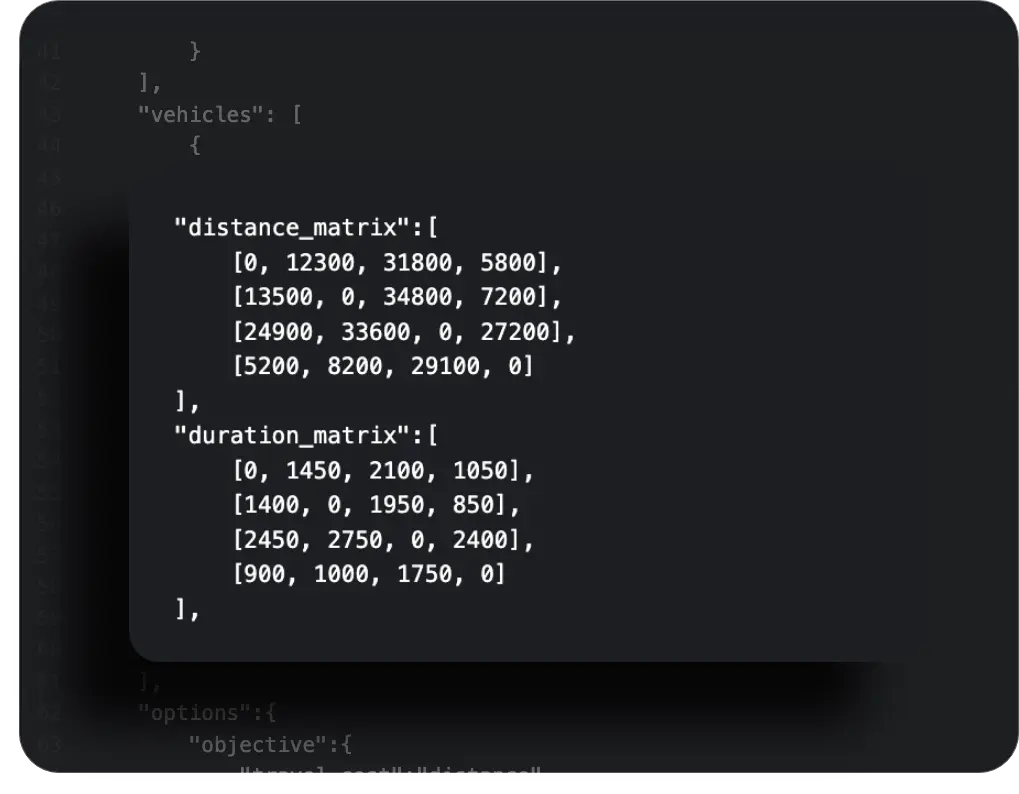
Our Route Optimization API now supports custom distance and duration matrices, allowing users to specify their own values for travel between locations. This powerful feature overrides default calculations, offering greater control over route planning and enabling highly customized solutions to meet specific business needs.
See a detailed example illustrating the custom distance matrix and duration matrix feature.
5. Maximum distance constraint for vehicle routing
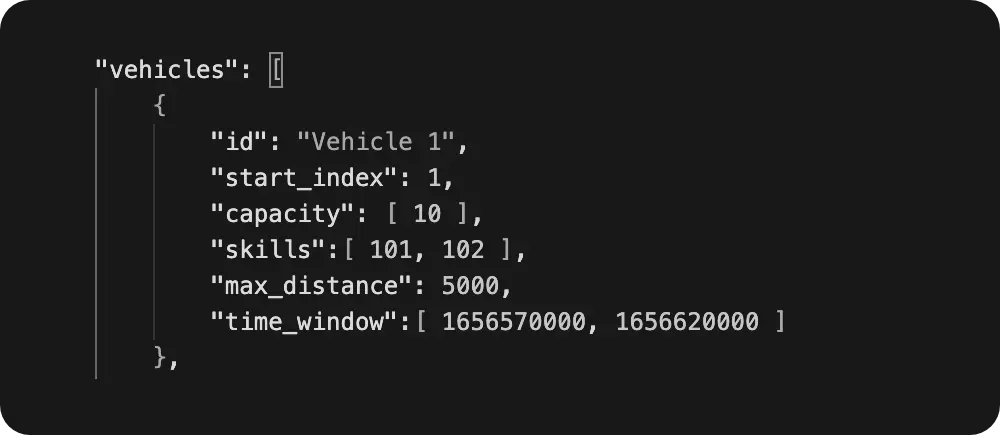
Our Route Optimization API now includes the ‘max_distance’ feature, which allows users to set a maximum travel distance for vehicles. This constraint ensures that vehicles do not exceed a specified driving distance, enhancing route efficiency and compliance with operational limits. When custom distance matrices are used, the max distance is applied based on those values, offering precise control over vehicle usage.
6. Limit vehicle travel time for optimized routing

Our Route Optimization API now includes the ‘max_travel_time’ feature, which allows users to set a maximum driving duration for vehicles. This ensures that vehicles do not exceed a specified travel time, enhancing route efficiency and adhering to operational limits. This constraint applies only to driving time and excludes wait, service or setup times. When custom duration matrices are used, the max travel time is applied based on those values, providing precise control over vehicle operations.
You can:
- Link specific jobs to depots to ensure vehicles from designated depots fulfill them.
- Prevent mixing incompatible cargo types by configuring load incompatibility.
- Set maximum ride time limits for passengers or shipments.
- Specify custom distance and duration values between locations for tailored routing.
- Set a maximum travel distance for vehicles.
- Set a maximum driving duration for vehicles.
Business benefits:
- Improved route planning efficiency and flexibility with depot linking.
- Enhanced cargo safety and compliance with load incompatibility settings.
- Increased operational efficiency by limiting ride times.
- Greater control over route preferences with custom distance and duration matrices.
- Adherence to operational limits and better resource management with travel distance and time constraints.
NextBillion.ai’s Driver App Now Available on the Apple App Store

Streamline your deliveries with the NextBillion.ai Driver App that we launched in Q2 of 2024! This all-in-one solution helps drivers manage tasks, navigate optimized routes and confirm deliveries with ease. Stay organized and efficient on the road with our intuitive app.
Key features:
- Task management: You can access all your delivery details, including scheduled times, customer contacts and special requests, in one place.
- Optimized navigation: Use our advanced route planner to find the best routes, saving time and minimizing unnecessary detours.
- Proof of delivery: Capture and upload photos as proof of delivery, providing instant confirmation and peace of mind for both drivers and customers.
- Seamless updates: Receive real-time updates and notifications to stay informed and ensure smooth deliveries every time.
NextBillion.ai Integrates With Motive for Enhanced Fleet Management
NextBillion.ai is now available on the Motive marketplace, allowing for the planning of complex multi-vehicle routes directly within the Motive dashboard. Route planners and dispatchers can seamlessly manage these plans, while drivers can view and engage with their routes via the Driver App. This integration enhances route management efficiency and driver coordination.
New Features Added To Route Planner Web Application
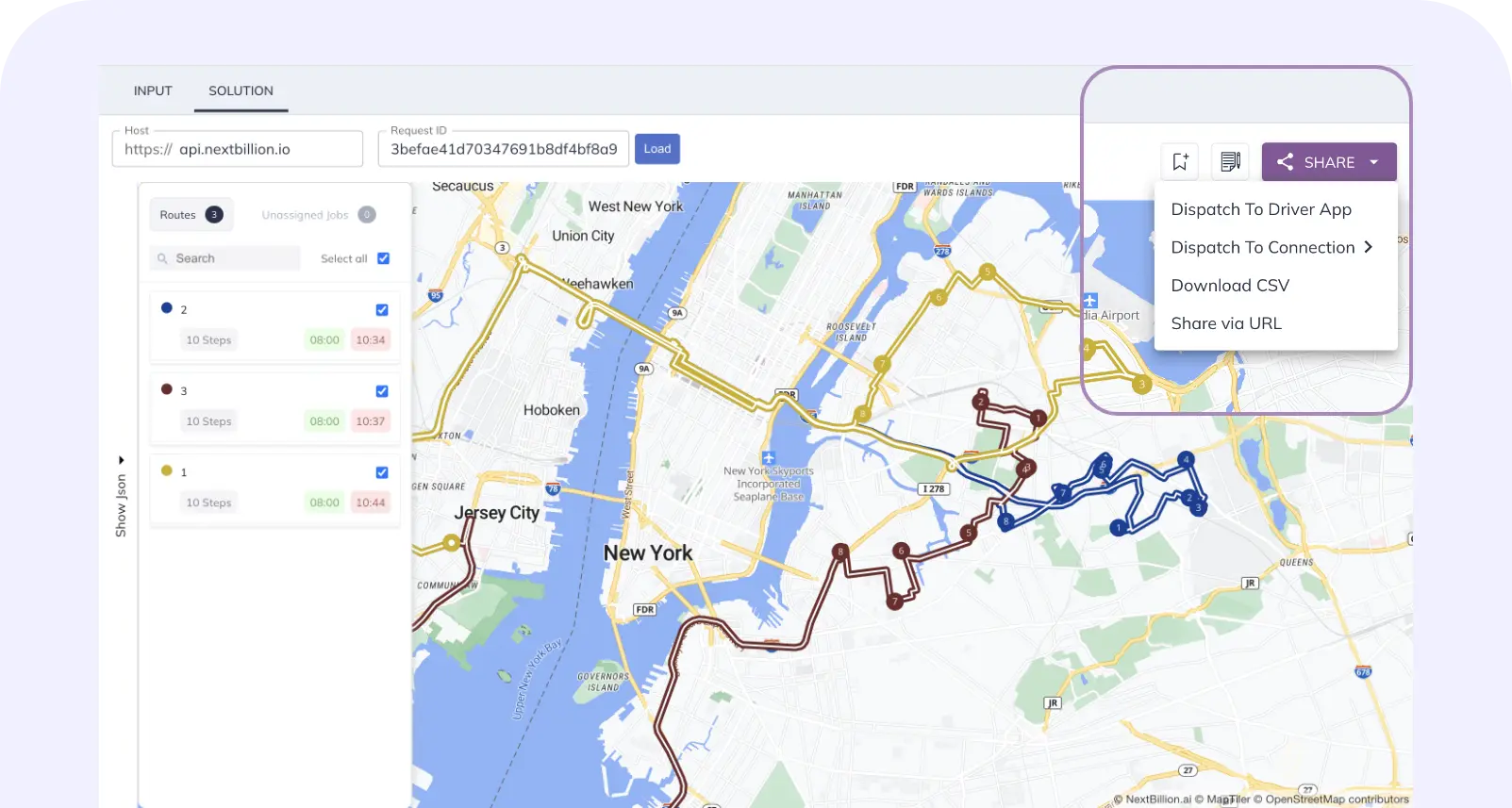
We have introduced two new features to the Route Planner web application in the NextBillion.ai Cloud Console — route dispatch functionality and route assignment. The route dispatch functionality streamlines the process of sending optimized planned routes to drivers, ensuring timely and efficient deliveries. Route assignment enhances the ability to allocate tasks to specific drivers or vehicles based on various criteria.
Other Important Updates
Generate routes with safe turn angles

Our Routing APIs now include the ability to customize safe turn angles for vehicles. This feature allows users to specify permissible turn angles, enhancing route safety by avoiding sharp turns. The defined angles help ensure smoother navigation and compliance with vehicle safety standards.
Track trips with Live Tracking API
Our Live Tracking API now includes the ‘Trips’ feature, providing greater flexibility in tracking specific periods or movements of assets. Users can start a trip by inputting details such as planned stops and trip names and, upon completion, retrieve comprehensive tracking data, including distance, duration and route geometries.
To learn more about the trips feature, head over to our documentation.
Jetpack Compose SDKs
Our new Jetpack Compose extension for Maps SDK and Navigation SDK integrates NextBillion.ai Map and NavigationView functionality into Jetpack Compose-based applications. This extension allows developers to leverage advanced mapping and navigation features, enhancing user experience and app performance.
For practical implementation and step-by-step guidance, refer to our detailed Maps SDK and Navigation SDK Compose Extension documentations, and explore working examples in the Compose test application.
Launched geocoding web app
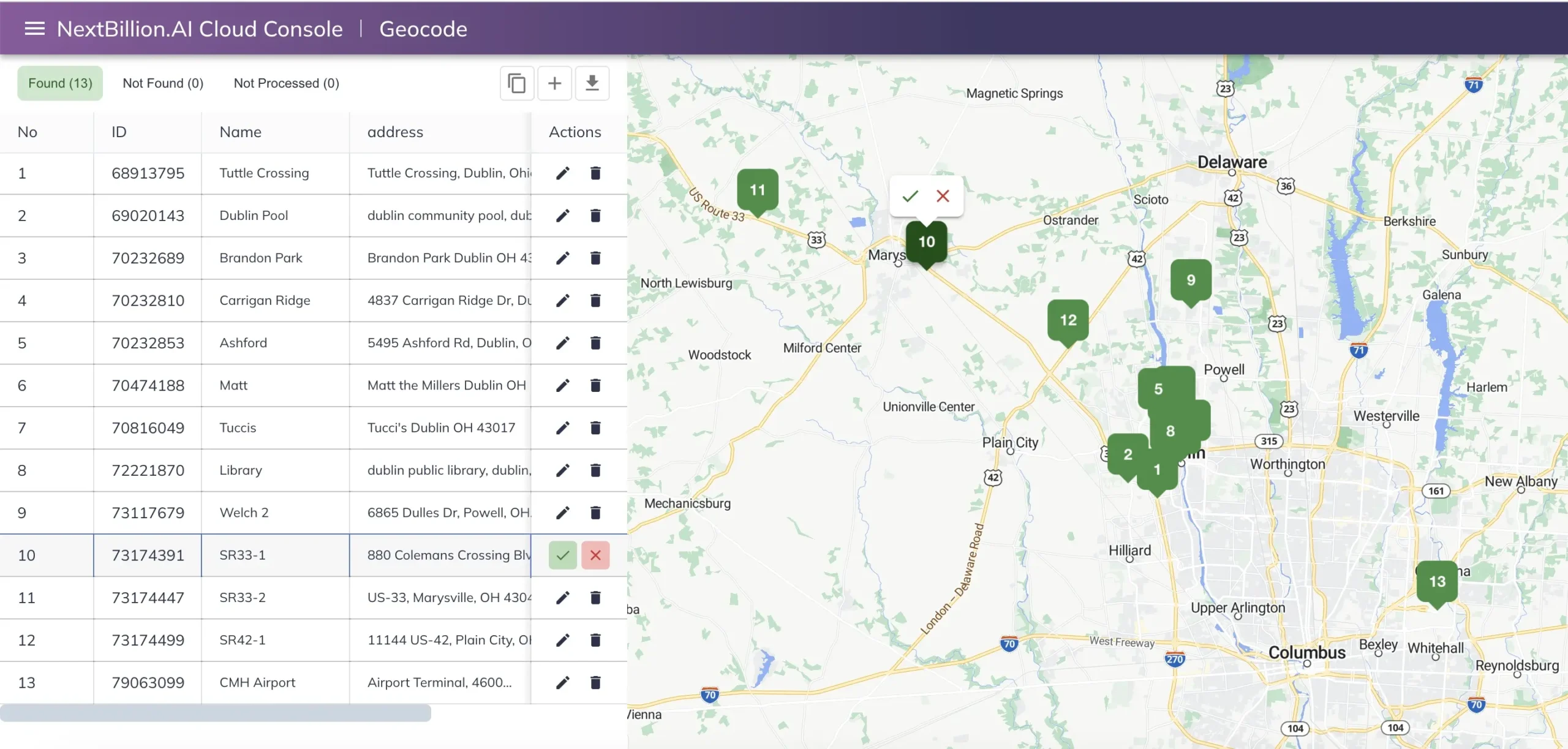
Our new Geocode Application in the Cloud Console offers robust address management and geocoding capabilities. Users can input addresses manually or upload them via CSV for accurate geocoding. The app provides latitude and longitude coordinates and displays them on a map, allowing for easy visualization and adjustment.
New constraints in Clustering API
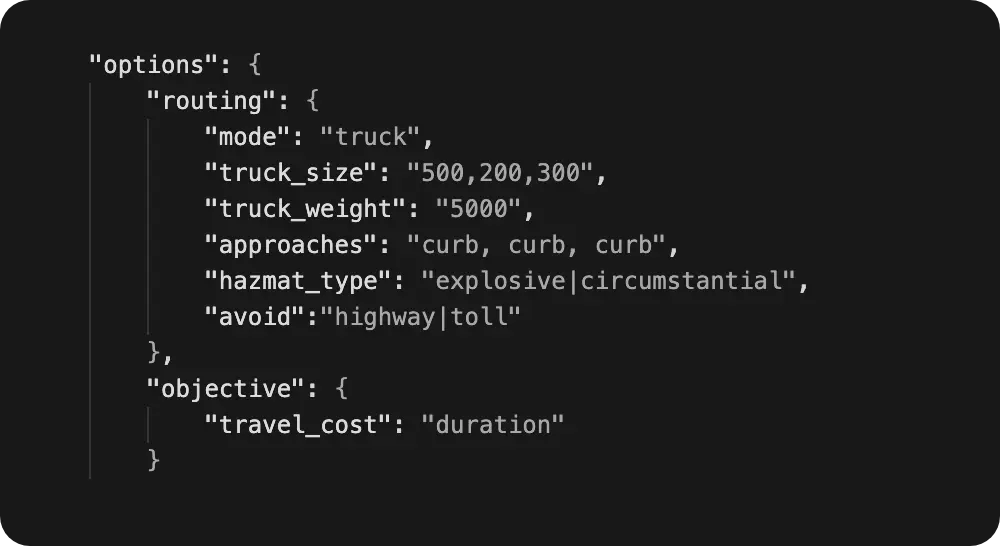
Our Clustering API now supports new routing parameters, including ‘avoid’, ‘hazmat_type’ and ‘approaches,’ to offer more precise route planning.
The avoid parameter lets you specify objects or maneuvers to bypass, such as tolls or highways. The hazmat_type parameter ensures safe routes for hazardous materials by avoiding unsuitable roads. The approaches parameter defines the preferred side of the road for approaching locations, impacting the overall route cost.
API tutorials for field services & on-demand delivery industry
In the second quarter of this year, we added technical tutorials tailored for on-demand delivery and field services industries to our ‘Solutions’ documentation section.
For the on-demand delivery industry, these tutorials provide insights into achieving real-time ETAs, calculating the shortest routes, optimizing multi-delivery routes, setting up real-time order alerts, grouping nearby orders and more.
See detailed tutorials for each of these use cases in our Solutions section for on-demand delivery.
In the field services industry, our new tutorials cover use cases like optimizing agent scheduling, allocating tasks based on skills, defining sales territories, extending agent shift timings and more.
See detailed tutorials for each of these use cases in our Solutions section for field services.
In The Pipeline: Upcoming Features and Enhancements
Looking ahead, our team is working on several exciting updates for the upcoming quarters.
In Fleet Hub, we will add the capability to manage drivers directly from the UI, making it easier to oversee your fleet.
For Route Optimization API, we are introducing ‘maximum stops and ‘cost per order’ features to enhance operational efficiency and provide more precise cost management. Additionally, we will also introduce alternative capacities to better handle varying shipment sizes.
Our Directions & Distance Matrix Flex APIs will feature a new avoid option for routes passing through a specified bounding box, enhancing route customization and safety.
Stay tuned for more updates as we continue to innovate and enhance our solutions to meet your evolving needs.
Ready to get started?
Request a DemoTable of Contents





